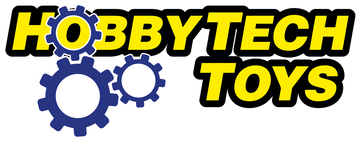RC plane control horns are small but crucial components that provide a connection between the control surfaces (such as ailerons, elevators, and rudders) and the servo arms or pushrods. They allow the servos to move the control surfaces, thereby controlling the aircraft's flight maneuvers. Here's a detailed overview:
1. Types of Control Horns:
-
Nylon Control Horns: These are the most common type and are made of durable nylon material. They are lightweight, inexpensive, and suitable for most RC planes.
-
Metal Control Horns: Metal control horns are typically made of aluminum or steel and offer increased durability and strength compared to nylon horns. They are ideal for high-stress applications or larger RC aircraft.
-
Adjustable Control Horns: Adjustable control horns feature a threaded design that allows for fine adjustments to the control surface's neutral position and throw. They offer greater control customization and flexibility.
-
Dubro or Sullivan Style Control Horns: These control horns have a unique shape and design, often with additional reinforcements or features for added strength and reliability.
2. Components of Control Horns:
-
Base Plate: The base plate of the control horn is typically mounted to the surface of the control surface using screws or adhesive. It provides a stable anchor point for the horn.
-
Lever Arm or Horn: The lever arm extends from the base plate and connects to the pushrod or servo arm. It translates the servo's movement into control surface deflection.
-
Mounting Holes: Control horns have pre-drilled mounting holes for attaching them to the control surface. These holes are often spaced to accommodate standard servo arm hole patterns.
-
Adjustment Holes: Adjustable control horns feature multiple adjustment holes along the lever arm. These holes allow you to fine-tune the control surface's throw and neutral position for optimal performance.
3. Installation Tips:
-
Ensure the control horn is securely mounted to the control surface using appropriate screws or adhesive.
-
Align the control horn so that it moves in the correct direction when actuated by the servo.
-
Use thread-locking adhesive on the mounting screws to prevent them from loosening during flight.
-
Check the control horn's alignment and movement before flight to ensure smooth and precise control surface operation.
4. Considerations:
-
Choose control horns that are appropriate for your aircraft's size, weight, and flight characteristics.
-
Inspect control horns regularly for signs of wear, damage, or looseness, and replace them as needed to maintain safe and reliable flight control.
-
Ensure proper linkage geometry and setup to prevent binding or excessive stress on the control horns during flight.
Control horns may seem like small and simple components, but they play a critical role in the overall performance and controllability of RC planes. Choosing the right type of control horn and ensuring proper installation and maintenance are essential for safe and enjoyable flying experiences.

